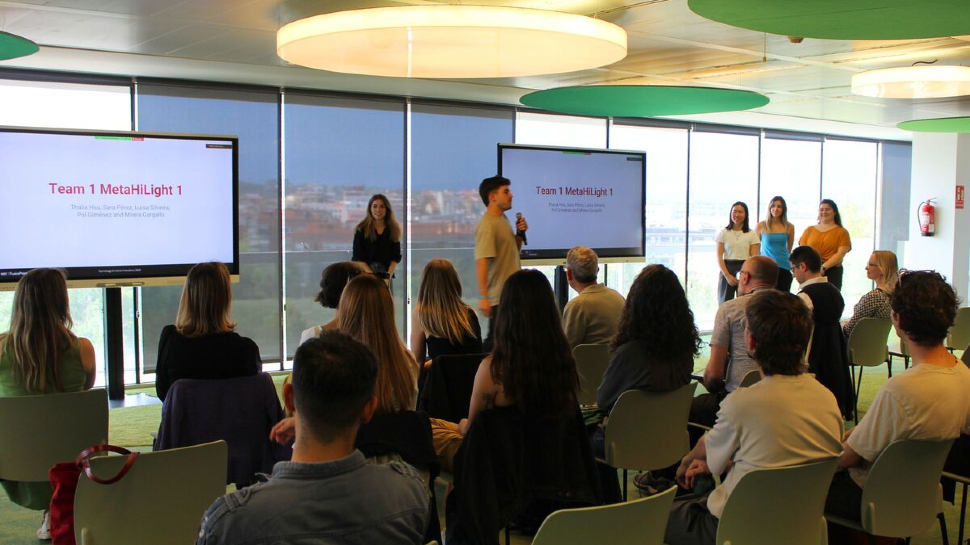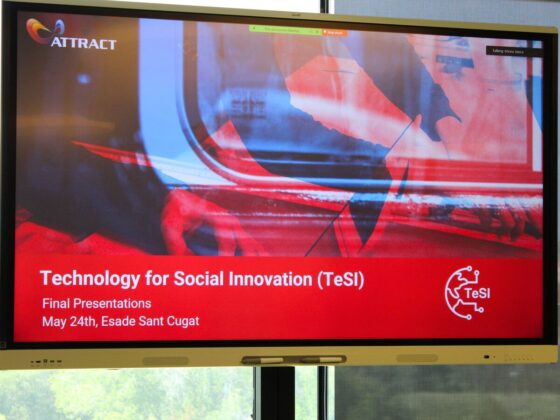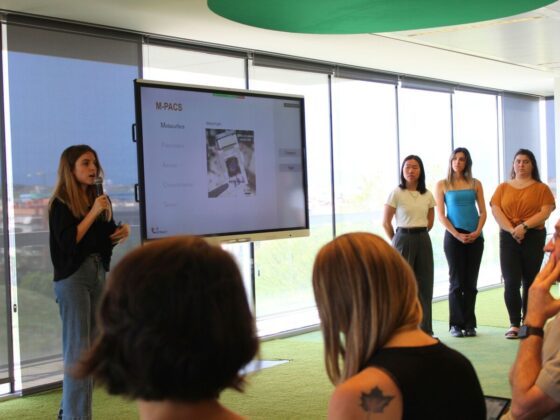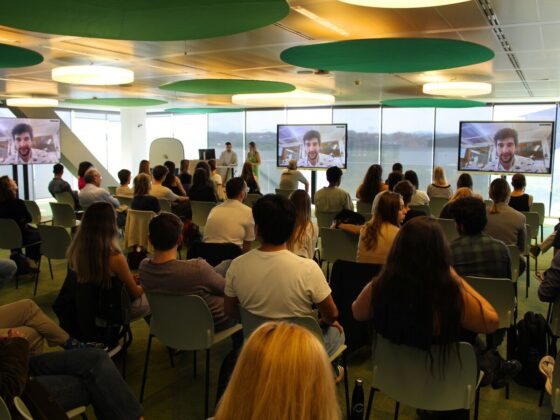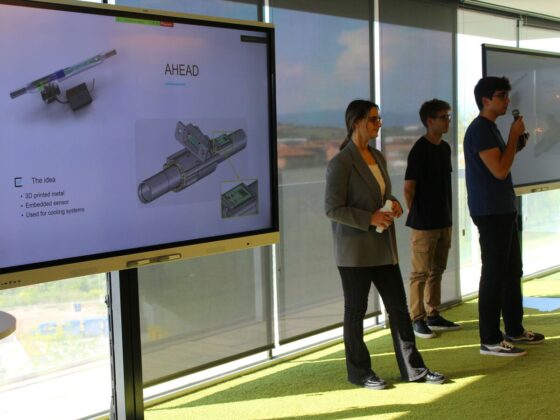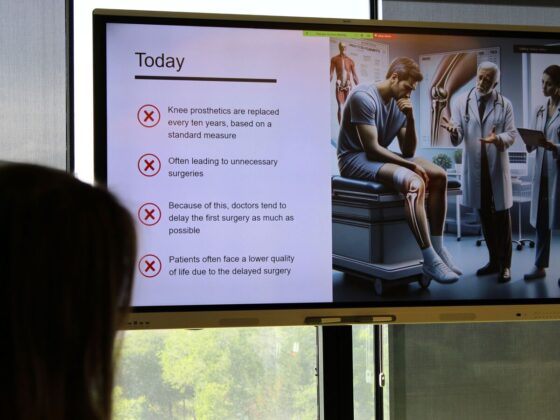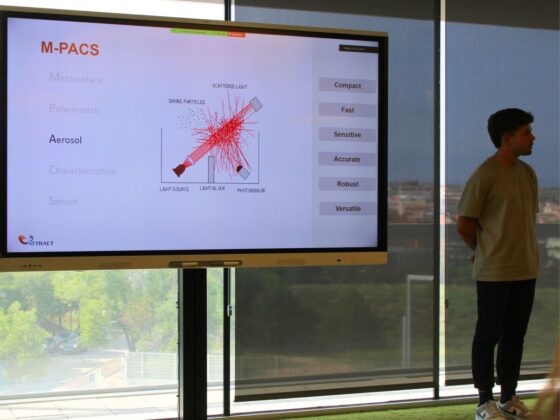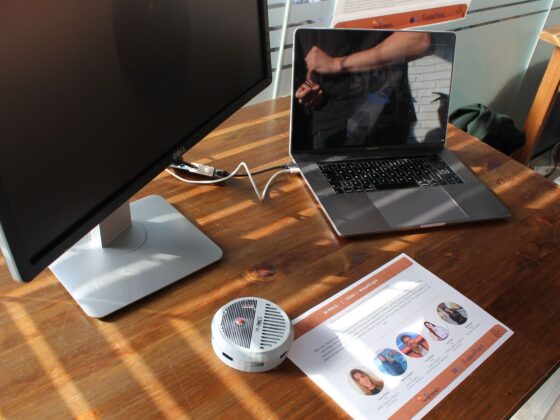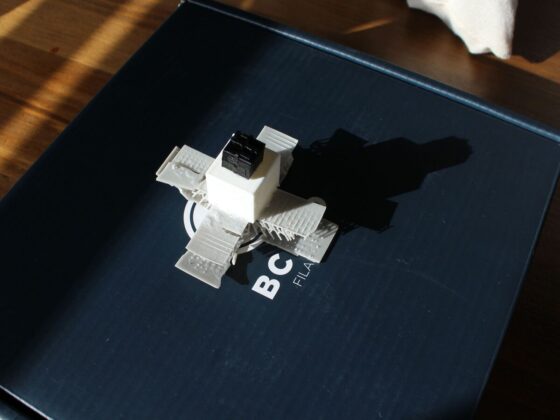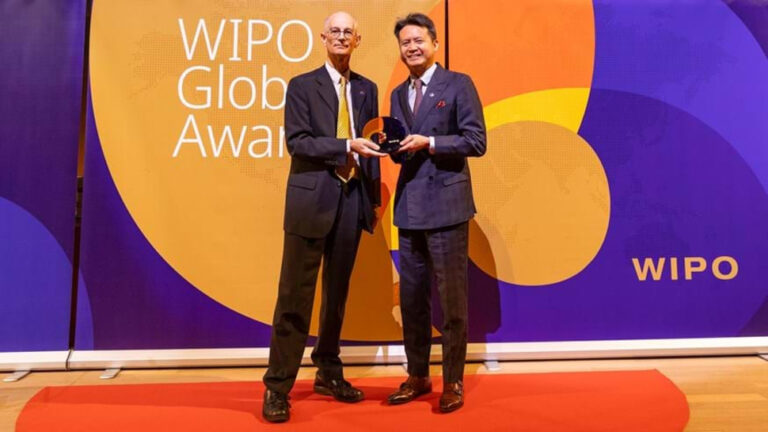The Technology for Social Innovation (TeSI), a program under ATTRACT Academy, aims to address important social needs by identifying disruptive applications and business models for cutting-edge technologies developed under the ATTRACT initiative and it’s aimed at students from the three Fusion Point partner schools: Esade, IED Barcelona and UPC.
Through this program, students receive support from the coaching team, go through a two-day ideation process at CERN IdeaSquare and have several touchpoints with the scientists of the involved research centres. Recently, the 29 students from the current edition of TeSI had their Final Gala at Esade, and they had the opportunity to showcase the prototypes they worked on throughout this program.
Get to know all the teams and their prototypes:
- Team 1: with over 100,000 flights carrying more than 90,000 passengers globally each day, ensuring air safety is crucial. Current technology alerts crews to fires within one minute of ignition. However, “M-PACS”, utilizing MetaHiLight technology, revolutionizes aviation fire prevention by detecting aerosols that can lead to fires before smoke or flames appear. This advanced detection significantly increases response times and enhances safety, taking aviation fire prevention to a new level.
- Team 2: in the context of global warming, increasing the accuracy of measures of all types of pollutants is indispensable. The team proposes combining nanosatellites with MetaHiLight and AI to solve those challenges. Their polarizer has potential use in aerospace as it has a low weight and energy consumption, some benefits that could increase the frequency of measurements thanks to reducing prices.
- Team 3: “Allertooth” is a tooth-mounted inlay food allergy detector. It is a 3D-printed device that uses AHEAD technology to embed sensors during printing, allowing a custom fit for different teeth. It connects to a smartphone via Bluetooth Low Energy transmitter and detects the immunoglobulin levels, providing real-time data on possible allergic reactions.
- Team 4: “Next Generation Prosthetics” seeks to revolutionize knee prosthetics by embedding sensors for real-time data on the state and wear of the piece. Thanks to AHEAD‘s 3D-printing technology, it minimizes surgeries needed while maximizing efficiency. Doctors can seamlessly monitor the prosthetic’s condition, facilitating tailored rehabilitation and long-term evaluations, ultimately enhancing recovery and accurately measuring the prosthetic’s lifespan.
- Team 5: “RescueHeat” powered by the HYGER technology, embeds advanced infrared detection in drones for human location in mountainous and remote regions. Utilizing high-purity black germanium, HYGER provides high sensitivity and low noise, ideal for detecting heat signatures in difficult terrains. The technology spans near-infrared (NIR) to long-wave infrared (LWIR), offering precise thermal data for search and rescue teams. It includes a communication unit and terrain tracking system, directing rescue efforts efficiently through challenging environments. With its affordability, CMOS compatibility, and adaptability, RescueHeat is poised to revolutionize search and rescue operations, enhancing efficiency and precision in disaster response and wilderness safety.
- Team 6: in contemporary times, agriculture represents a major portion of the world’s food production. However, current techniques for dealing with pest infections are significantly outdated. These techniques are characterized by being reactive, requiring the crop to show signs of illness before action is taken, and by heavily relying on massive pesticide treatments that contaminate drinking water and the food itself. “H-ARGUS” is a revolutionary network of 360-degree near-infrared cameras able to directly detect insects in the field. This allows the monitoring of its population, thus preventing pest infections before any damage can be done. The team used the HYGER technology.
Discover more about the TeSI program here.
